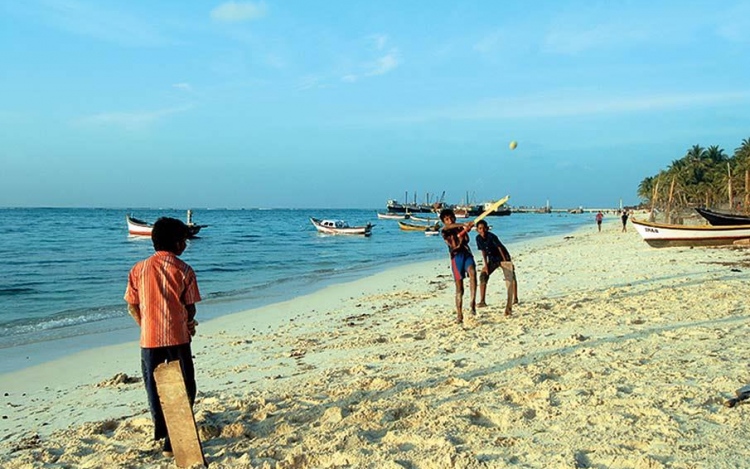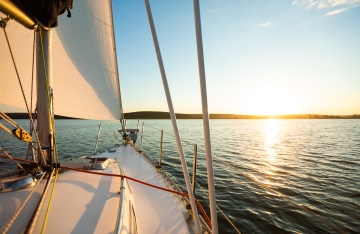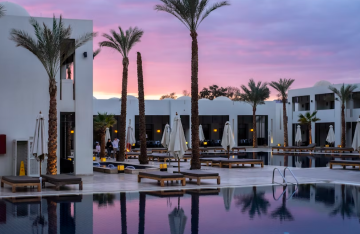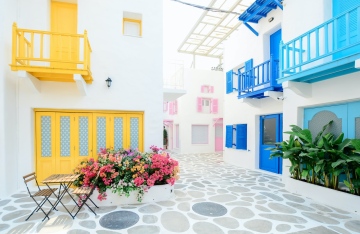Situated on the delta of the Chao Phraya River, Bangkok is the chief port and capital of the country of Thailand. The city, cosmopolitan in nature, sits in a country known for its interesting and rustic villages and small, quaint towns. Located about 40 km (or 25 miles) from the Gulf of Thailand, this commercial and cultural center was once divided into two municipalities. The Krung Thep sat on the eastern bank and Thon Buri was located on the western bank. The two locales were linked by several bridges.
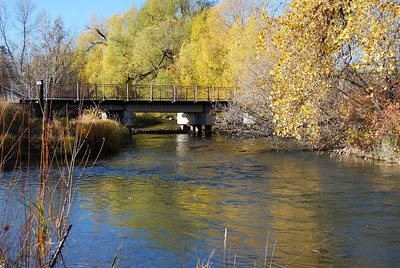
An Array of Cultural Sites and Activities
In 1971, the municipalities were combined into a city-province with a single municipal government. A year later the merged provinces and city became the Bangkok Metropolis, also called Thep Maha Nakhon. Today, Bangkok is characterized as a crowded and bustling city – one that features shops, homes, temples, and factories. This acclaimed tourist destination is also noted for its array of cultural sites and a thriving night life.
The Name of Bangkok
The name of Bangkok, which is used frequently by foreigners, refers to a time before the city was constructed. At that point in history, the name referenced a district (bang) of wild-growing plums (makok). The Thai people call their capital Krung Thep, which is only the first part of the city’s lengthy and official name. The abbreviated version is frequently translated as “City of Angels”. The 604 square miles or 1,565 kilometers of the city is home to over six million people.
The Climate
Warm to hot throughout the year, Bangkok maintains temperatures that range from 77 degrees Fahrenheit (25 degrees Celsius) in December to 86 degrees Fahrenheit (30 degrees Celsius), at the peak of the hot season in April.
Yearly Rainfall
The median yearly rainfall totals about 60 inches, or 1,500 mm, most of which consists of brief torrential downpours during the latter part of the day. The rainy season lasts from the middle part of May through the end of September. From December to February (the dry season), the rain subsides. Relative humidity varies from a low 60% to over 80% when it rains.
The Modern City – Expansion and Progress
The modern city of Bangkok has undergone an explosive rate of growth. This growth started in the 1960s. The city center, which once was enclosed by a wall, has been developed and three administrative boundaries of the city have expanded into agricultural areas. Some of the districts have become functional units as the inner section of the city has become more commercial and institutional. The outer city has become more industrial and residential.
Expanding Governmental Facilities
Throughout Bangkok, walled monasteries, known as wats, and Buddhist temples serve as ornamental icons for cultural, religious, and commercial activities. If you are seeking a Bangkok property, then you will notice that the commercial and governmental districts of Bangkok are featured in traditional locales. Governmental offices were once housed in the Grand Palace’s walled compound. However, by the late 1800s, they were housed in surrounding mansions and palaces.
The government then spread into adjacent Thai-style or colonial-built office buildings or into houses along Ratchadamnoen Road. Multi-storied buildings have been constructed to comply with the continual demand for space as well. Several large camps surrounding the National Assembly Hall and to its north, make up the military section of town.
A History of Growth
When Bangkok became a national capital in the 1700s, its citadel was moved to the eastern bank of the Chao Phraya River. Business was initially conducted in thatch-type houses. By the early twentieth century, several streets in the city were lined with masonry on two-story shop homes. The district now features shop-houses that are around six stories high. Warehouses line each side of the river while nightlight entertainment is accessed on Pat Pong Road. Silom Road is home to the financial district while the Sam Rong area features industrial facilities.
Floating Markets
Various merchandise and foods are sold each day from canal boats near Wat Sai in the city. At one time, several of these kinds of markets, as well as door-to-door floating vendors, offered their wares and foods to the city’s residents.
The Expanding Housing Situation
During the 1960s, housing expanded rapidly in Bangkok. From the mid-70s to the mid-80s, over 100,000 new units were constructed. Emphasis was placed on renovations in the inner parts of the city. Today, private developers supply homes for mid-income buyers and a variety of governmental agencies offer homes to their employees.
The Affluent Section of Town
Luxury homes, which are part of the enclave of the foreign investment community, typically take the form of modern and large two-story structures, each set in private compounds and outfitted with separate quarters for servants. Bang Kapi is probably the most affluent of these communities.
A Place is Its People
Of course, people make the real estate market in Bangkok a success. The city is defined by young and upcoming adults, with the Chinese making up the largest minority. However, there are also large communities of North Americans, Europeans, and other Asians. The Chinese are concentrated in the commercial part of Sam Peng, while Indians are located in Wang Burapha. Western and Japanese neighborhoods are located in the eastern and affluent sections of Bankgkok.
A Mix of Culture and Economics
Indeed, Bangkok is a city that is a mix of cultural and economic interests. It’s a place where new business practices and old cultural traditions meet. It’s where people from all parts of the world feel comfortable to congregate. It is not surprising, because the city welcomes more visitors each year than any other place in the world. You can never become bored with the diversity. The gleaming temples and long-tail boat rides through the floating markets are just two examples of how the city captures one’s attention as well as their regard.
A Welcoming Escape
Luxury malls and extravagant hotels welcome each newcomer with the same kind of famed Thai hospitality. Simply put, Bangkok never ceases to amaze its visitors or residents. It is the one spot in the world where you can retreat and find a place to call home at the same time.

